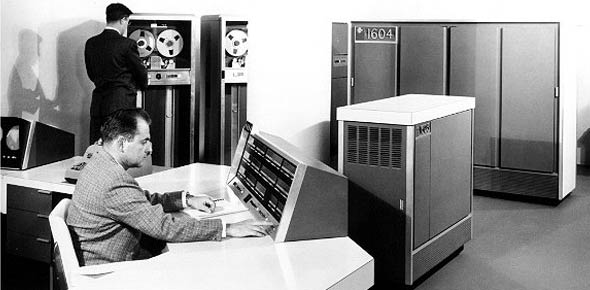Where do you stand while loading a rocket into a launcher?
How may the electric primer in 20mm ammunition be fired accidentally?
The tendancy of a substance to burn with a rapid and sparkling...
The main types of fuze action are impact, time and
What are the componenets of a typical small-arms cartridge?
What is a requirement for military explosives?
What are countermeasure flares designed to do?
For what do we use a shaped charge?
How do we identify practice warheads?
Where is a proximity fuze placed on the bomb?
Name the two types of effect of signals.
What is the largest caliber ammunition that we classify as "small...
How can you increase the penetration effect of a shaped charge?
What mortar requires a truck or tracked mortar carriers to move them?
With electrical fuzes, what is used in place of arming wire?
What air-inflatable retarder is used on the MK84 bomb?
Four factors control the visibility of pyrotechnics--candlepower,...
What hazard is invovled in using blank ammunition?
The rate of transformation for high explosives is between
The design of which safety feature is to prevent movement of the...
What is used to adapt a nose fuze for an M-series bomb?
The BLU-109/B is a
What is the M129 bomb used for?
What effect does more damage then the framentation effect of a...
Electric squibs are designed similar to
What are initiators designed to do?
The major physical difference between the CBU-87 and the CBU-89 is the
What is the final effect of deflagration under confinement?
What holds the ball rotor of the 30mm fuze in an unarmed poisition...
What is the most common color of military safety wire?
What do we use to detonate high explosives?
Which 20mm round carries the M505 point-detonating fuze?
How are impulse cartridges initiated?
What mortar has a short range and a small explosive charge?
How can you achieve an airburst with a general-purpose bomb?
What pyrotechnic effect is produced by the AN-MK13 signal?
Which chemical filler is used in the AN-M8 smoke grenade?
How do you set the firing delay times in an M904 mechanically timed...
What provides the electrical power needed to operate the FMU-139A/B...
The CBU-89 is physically the same as the
What does a booster do?
How many projectiles are contained in each BLU-108/B submunition?
What is the arming delay distance for the M505 fuze?
What does the cartridge case do?
Name the three classifications of Air Force grenades
Which sensor is a radio-frequency radar ranging system used with the...
What type of explosive filler does an M26 fragmentation grenade have?
Besides thier purpose, what else do we use to classify rockets?
What air-inflatable retarder is used on the MK82 bomb?
How is 30mm ammunition identified?
What type of bomb is a BLU-113?
In external appearance, the M129E2 leaflet bomb is similar to the
When 25mm ammunition is bulk-packed, how many rounds may you expect to...
How is ignition from the primer carried to the propellant in a 30mm...
The BLU-109/B augments or replaces the
How is the incendiary composition initiated in the 20mm armor-peircing...
What is the easiest way to describe the 40mm multiple projectile...
In the explosive train, where can you find the delay?
What part of the 20mm projectile imparts spin and stabilizes it in...
What are the components of the 105 mm round?
The penetrating action fo a shaped charge is the result of the
When is a bomb fuze considered to be armed?
How is an ALA-17-series flare ignited?
What do the calibrated markings on the face of the LUU-2A/B flare...
What is the only difference between the CBU-87/B and the CBU-87A/B?
Which dispenser does the CBU-97 cluster bomb use?
The FMU-143 series fuze is normally the only fuze used with the
Which wind-corrected munitions dispenser component cants the fins to...
The identifying information on a 20mm round of ammunition is marked on...
How can you tell a 25mm dummy cartridge from other 25mm rounds?
How far behind an M18A1 mine should personnel take cover before they...
How long does the red tracer composition burn in the 40mm AAA,...
Which proximity sensor is used with the CBU-97/B?
Which component is part of the ALE-50 towed decoy system?
What are the basic components of an explosive train?
The FMU-54-series fuzes are used in
What is the purpose of the ignition booster in the 25mm round?
What is the hazard associated with a flechette warhead?
In an electronically timed fuze, what replaces the arming vanes used...
What weapon type is simulated by the BDU-38/B?
Which proximity sensor is used with the CBU-89/B?
The CBU-89A/B with a WCMD kit turns into a
What fuze is used in 30mm HE incendiary ammunition?
How many part numbers may you find on 30mm armor-piercing...
Which proximity fuze has a height-of-burst setting built into the fuze...
The CBU-103/B is converted to a WCMD from what cluster bomb unit?
How many point-detonating M577 fuzes are packed per wire-bound crate?
How do we classify 40mm ammo?
What impluse cartridge supplies the gas pressure to launch the flares...
How long does the safety fuse burn before igniting the powder charge...
What is the purpose of the CCU-11/B cartridge in the BDU-38/B practice...
Which impulse cartride does the RR-170 chaff cartridge use?
The 105 mm, smoke, white phosphorous round burster charge is loaded...
What is the minimum arming distance from the launcher muzzle the 40mm,...
How many 105 mm rounds are packed in the PA71 container?
What is the maximum number of flares the SUU-25E/A dispenser may...
What dispenser is used to dispense the RR-170/180 chaff cartridges on...
Which fin provides a stablized flight and a "high drag" option for the...
Which flare is a kinetic decoy rocket used in the advanced strategic...
What is the explosive filler for the M30 practice grenade?
















